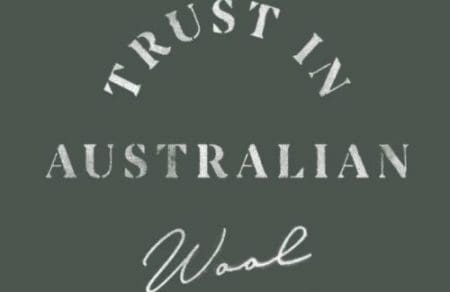
NON-MULESED wool producers claim WoolProducers Australia’s Trust in Australian Wool initiative has failed to adequately recognise efforts to breed sheep that don’t need surgical breech modification.
Trust in Australian Wool was launched by WPA last month to outline the many welfare, biosecurity and animal health and management programs that underpin wool production in the country.
However, the campaign material makes only a few mentions of non-mulesed wool production and nothing about the genetic progress made by some breeders in producing sheep that don’t require mulesing.
On the Trust In Australian Wool website there is a mention of a non-mulesed wool grower, but only in the context of the number of trees planted.
In the animal welfare section of the initiative’s handbook under ‘Breech fly strike and mulesing’ there is no mention of the efforts of some breeders to breed plain-bodied sheep that don’t require mulesing. The section does state that: “Mulesing has proven remarkably effective as a preventative measure, because it involves one-time surgical removal of wool-bearing skin on either side of the breech of lambs, greatly reducing flystrike of the breech. Australian wool growers have invested heavily in development of alternative procedures of mulesing, with a number of alternatives being trialled.”
Under a section on Wool Sustainability Declarations, the handbook mentions that Australian wool producers voluntarily participate in international sustainability accreditation and certification programs which require non-mulesed or ceased mulesed flocks.
A lack of non-mulesed references – Oppenheimer

NSW sheep breeder Martin Oppenheimer
New South Wales non-mulesed Merino breeder and grower Martin Oppenheimer said the lack of references to Australia’s non-mulesed wool production indicated WoolProducers had not listened to major processors such as the Schneider Group and brands calling for more non-mulesed wool.
“We’ve got to listen to our customers and our customers are saying that they have a problem with selling a product that either doesn’t have a description (National Wool Declaration) or comes from mulesed sheep – particularly if the wool is from sheep mulesed without pain relief, that is even worse.
“To not promote what we’ve achieved and what we are achieving year-on-year … growth in non-mulesed wool production is happening despite the key industry bodies – AWI and now WPA – funded by government money,” he said.
“So the government is actually working against the wool growers that are making the effort to produce what the customers want.
“That is one of the reasons the industry isn’t growing,” Mr Oppenheimer said.
“How can you grow when you are not getting support from your own government and your own industry organisations?”
“It’s one thing to not get support from Australian Wool Innovation, but it’s another thing not to get support from the body that says it is the peak wool grower representative body,” he said.
“How the hell are we meant to grow the industry when all these brands and wool processors saying they want more non-mulesed production yet we get no support the industry?
“It’s just mind-boggling,” Mr Oppenheimer said.
“Why not quote some of the achievements that we’ve actually made?”
He said this could have included reference to some of the sheep that are top performers for many of the money-making traits and don’t require mulesing.
“What they mention is ‘we’ve got to keep mulesing and here is pain relief’.”
WPA has not ‘undersold’ non-mulesed wool production – Storey

WPA president Ed Storey
WoolProducers Australia president Ed Storey said Trust In Australian Wool talks about many aspects of the nation’s wool production systems.
“We acknowledge that Australia is the largest producer of non-mulesed wool in the world.
“Those producers have access to additional markets and additional premiums, and producers in Australia will manage health and welfare risks, blowfly risk, for their sheep in their production system as they see fit,” he said.
Mr Storey said WPA did not believe it had “undersold” non-mulesed wool production in Australia in the Trust in Australian Wool material.
“No, we don’t think we have undersold it, we’ve acknowledged that people do it.
“We are the largest supplier in the world of non-mulesed wool in the world.”
When Mr Storey was reminded that this was not mentioned in Trust In Australian Wool material, he said the campaign also did not mention every program run by Animal Health Australia that growers fund.
“It is a snapshot, it’s got other work associated with it over time, and in the long run, it will give customers confidence and some education about the many things we do to our sheep and the way we look after them and the land, on an going basis so that they can have trust in the product that they buy
Mr Storey said the Australian Sheep Sustainability Framework will report on metrics around the number of mulesed sheep in the flock and/or treated with pain relief annually.
“Trust In Australian Wool very clearly references the sustainability framework.
“Trust in Australian Wool has a broad scope to give knowledge to our customers and indeed to our producers about the wide range of things we do for the health and welfare of our animals, our people and the environment,” he said.
Mr Storey said the Australian Sheep Sustainability Framework showed that the industry is being transparent.
“We had public input into this sustainability framework that will report on these metrics and in the end we live in a market-based economy; descriptors will be made, the market will sort it out in the long run.
“But what I do know is the Australian wool growers will have the health and welfare of our animals as their number one priority.”
After the Trust In Australian Wool launch last month, NSW non-mulesed wool sheep breeder and grower Paul Favaloro said on Sheep Central:
“WoolProducers Australia, this is not a good look. I watched your Trust In Australian Wool launch, which you did a good job of.
Now we discover that freeze branding is nowhere near what they tried to tell us — no surprise there — and WPA has known the results from trials for the last two months.
Reading the sheep welfare section, there is no mention of the genetic solution to mulesing that so many growers have achieved. AWI is no better with the 2030 strategy. Pillar 5 has mulesing just going away. Why are our industry bodies afraid to tell growers what is really happening? Consumers do, while all we want to do is produce a quality product.
Fellow NSW non-mulesed wool producer Doug Wright remarked on Sheep Central”
What a wasted opportunity to tell the world of the progress made by sheep producers. But no, the world has been told that mulesing is ok and will continue. This all looked like a promotion for chemicals involved.
Not a mention made of the work that has been done using the genetic solution to breed productive Merino sheep that don’t need mulesing and are fly-proof as well.
The world needs to be told that it is possible and that producers are achieving great results by moving to the modern Merino. All in all a totally wasted opportunity to sell progress to the world.
Industry consultant Andrew Woods said Australia produces about half of the world’s non-mulesed wool under 18.5 micron, about 28 percent of 19 micron wool and about 17pc of 20 micron wool.
Mr Woods said Australia had the most potential to increase non-mulesed wool production of any country because of its position as the leading global wool producer.

In the mules-free sale initiated by Paul Favilaro, Parkdale sold 230 bales of non-mulesed 19 micron wool at a $1.50/kg premium. Thanks Paul for your vision, other vendors had larger premiums. So not a one-off. The market was quoted as higher for “good spec” lower for lesser types. Is AWEX calling non-mulesed a good specification? Call it as it is please. Our wool is usually quiet dusty from a mixed cropping enterprise. The lack of media attention is defining.
But hey, there is no need to lose wool cut Jim Gordon. You need to keep looking. There are non-mulesed sheep that cut 10 percent of body weight in fleece weight and rear 137pc of lambs weaned; The highest per hectare earners out there. Far better then cropping.
I hear every other week of large flocks being dispersed and land going into other uses. There is no leadership from the mainstream Merino stud industry. They are still breeding fly traps with low weaning rates and forcing young people off the land. This is mainly caused by big shows chasing a broad ribbon for how much wool a ram can carry run on the front lawn. These rams can’t perform when they go out into the field; however, growers get caught with the hype of clever used car salesmen and buy another round of culls.
WoolProducers doesn’t want to know us. AWI doesn’t want to know us. Most of the producers who mules don’t want know us. The consumers love us. Maybe it’s time to seriously consider going it alone? I’m sure our levy payments could be used better by a group promoting non-mulesed wool rather than ignoring it.
Dirk Stevens, you are right with this suggestion. We can also add higher fertility, ease of shearing and no need to use chemical for fly prevention.
A commercial Merino breeder doesn’t have to cut less clean fleece weight selecting for non-mulesed sheep. Just look at the ad on TV that developed the Australian Merino. Come forward 200 years, and select for short tail Merinos. All that has to be done now is select for lamb survival, while keeping wool cut. More lambs. More wool. More meat. Simple.
I am a pain relief muleser who has cut mulesing numbers in half by not mulesing my wether lambs. Wether lambs go to slaughter in the first year and do not require mulesing. Nobody has ever acknowledged this.
John McKeon, yes, you need congratulating for trying to supply the market with what they want: pain relief with no mulesing. I wish others would make a similar step. As you breed towards less wrinkle and less weight of skin, you will be able to stop mulesing the ewes. The benefits as I have experienced it are more wether lambs to sell and less body strike. If you get more lambs, you will get less wool off the ewes; however, overall with the lamb’s wool included you will get more wool. Dry ewes cut the most, but as you have already discovered, sale of surplus sheep is the profit driver.
As usual, the problem is some traditionalists will continue to do the same thing over and over and, expecting a different result. Our little wool industry has always been ruled by these small-minded people who have forgotten a couple of very important rules: 1 – the customer is always right, and they overwhelmingly don’t want the mulesing of sheep to take place. Rule 2: the golden rule; the man with the gold makes the rules. Listen to our customer base and build an economically sustainable industry that can compete with other land use enterprises.
What a great summary of the situation.